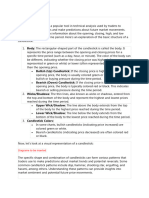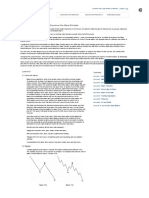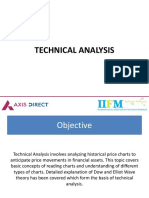Trading Patterns — Illustrated Full Guide
Complete, detailed explanations with schematic diagrams for each pattern. (Prepared for Roshan)
1) Candlestick Patterns
Alright bro — deep dive time. Below I’ll explain every category and every sub-head you asked for: what it is,
how to spot it, the psychology behind it, exact trade rules (entry / stop / targets where applicable),
timeframes, confirmations, and common mistakes. 1) Candlestick Patterns Candlesticks show price action
for a time period (open, high, low, close). They’re visual tools for short-term setups and often used with
higher-timeframe context. Single-candle patterns - Doji — open ≈ close (tiny body). - Psychology: indecision
between buyers & sellers; context matters (after rally = possible reversal). - How to trade: Wait for
confirmation next candle (directional close). Stop a few ticks above/below the wick. - Pitfall: Doji alone is
weak. - Hammer (bullish) / Hanging Man (bearish) - Structure: small body near top, long lower wick (≥2×
body), little/ no upper wick. - Psychology: rejection of lower prices; buyers stepping in. Hammer at support =
reversal signal. - Trade: Enter on next candle close above the hammer high; stop below hammer low; target
first resistance or prior swing. - Pitfall: hammer in thin-volume environment can be fake. Two-candle patterns
- Bullish / Bearish Engulfing - Structure: a candle fully engulfs previous candle body (ignoring wicks). -
Psychology: strong change of conviction. - Trade: Enter when price continues in engulfing direction; stop
below engulfed candle; TP = measured move or next SR. - Pitfall: must engulf bodies, not just wicks.
Three-candle patterns - Morning Star / Evening Star — small indecision candle between two strong candles
of opposite direction; good reversal signals after a trend. - Three White Soldiers / Three Black Crows — 3
consecutive strong candles showing momentum continuation.
�2) Chart Patterns (Classical patterns)
2) Chart Patterns (Classical patterns) Formations on price chart that reflect supply/demand balance over
longer durations (hours → weeks). Reversal patterns: Head & Shoulders, Double Top/Bottom, Triple
Top/Bottom, Rounded Top/Bottom. Continuation patterns: Cup & Handle, Flags & Pennants, Triangles,
Rectangle.
�3) Harmonic Patterns
3) Harmonic Patterns (Fibonacci-based) Harmonic patterns are precise geometric patterns that use
Fibonacci ratios to predict high-probability reversal zones (D point). Common patterns: Gartley, Bat, Butterfly,
Crab, Shark, Cypher.
�4) Elliott Wave Theory
4) Wave Patterns (Elliott Wave Theory) Price moves in fractal waves — motive (impulse) 5-wave moves and
corrective 3-wave moves. Use for structure/counting.
�5) Fibonacci Patterns
Fibonacci retracements and extensions help identify pullback and target zones.
�6) Point & Figure & Volume Patterns
6) Point & Figure and Volume Patterns Point & Figure charts focus on price movement without time. Volume
patterns (spike/climax, OBV divergence) confirm moves.
�8) Ichimoku Patterns
Ichimoku provides cloud (Kumo), Tenkan/Kijun cross, and Chikou span for trend and support/resistance.
�9) Wyckoff Method
Wyckoff: Accumulation, Distribution, Springs, Upthrusts — used to read institutional activity.
�10) Renko & Market Profile
Renko focuses on bricks for trend clarity. Market Profile shows distribution of trading activity by price.
�Closing Notes & Checklist
Practical checklist — how to trade a pattern: 1. Identify the pattern on a clean chart (use higher timeframe to
set context). 2. Validate pattern rules (ratios for harmonics, wave rules for Elliott, proper swing points for
H&S;). 3. Confirm with at least one secondary tool: volume, RSI divergence, order flow, or a lower-timeframe
reaction. 4. Entry: conservative = wait for confirmation candle/retest; aggressive = at pattern completion (D
point / neckline break). 5. Stop: place beyond logical invalidation point. 6. Targets: use measured move, fib
extension, or scale out at multiple levels. 7. Risk management: risk a fixed % per trade; use RR and consider
ATR for stop sizing.





















































































